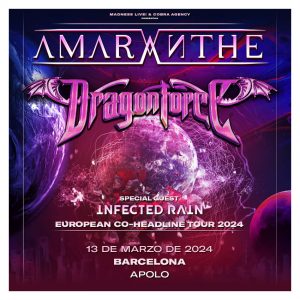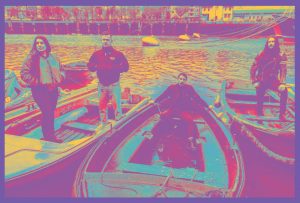BEDEMON (Eng.)
– Hello, lots of thanks for answering our interview. How is everything going into the BEDEMON’s camp right now?
Mike: Pretty darn well as a matter of fact. †We appreciate all the great response to Symphony of Shadows and we know Randy would be very happy.†
Geof: Well, right now we are waiting to receive and finally get to hold in our very anxious hands the actual CDs and LPs. As of the day of this interview (8/19/12) we haven’t actually seen a physical copy. They should arrive within the next few days. Aside from that, we are totally blown away by the early response to Symphony of Shadows. The reviews have been amazing and very positive, and by the way, QUEENSOFSTEEL has the honor of being the very first review we received!
– Starting with some history of the band, it was formed back in the 70’s by former members of PENTAGRAM. What prompted you back then to form BEDEMON?
Mike: Randy asked me if I would be willing to play bass on some of his original songs and I said sure and eventually wrote a song for the first album. †Basically my friendship with Randy was the reason for being a part of BEDEMON.
Geof: Yeah, the thing that people have a difficult time understanding is that BEDEMON was not and isn’t really a “band” in the traditional sense of the word. We didn’t rehearse; we didn’t play any gigs. It was strictly a recording project. Randy was a good friend of PENTAGRAM singer Bobby Liebling and myself, and he would sit at home writing some amazing, doomy BLACK SABBATH-type of original songs. When he wanted to record them, we’d meet at the warehouse where PENTAGRAM rehearsed and record Randy’s latest songs. Sometimes Bobby or I would co-write a song with him; I wrote “Frozen Fear” and “Axe To Grind” and Mike wrote “Last Call,” which is currently featured in the documentary film on Bobby called Last Days Here. We would record them on my same reel-to-reel tape recorder that we used to record PENTAGRAM rehearsals. Randy would keep the tapes at his house to listen to, so it wasn’t a band. The name came about because one day Bobby was asking what Randy was calling this project, which Randy had previously thought about Behemoth or Demon. Bobby said, “What is it? Behemee-demon or something?” and out of that joke came . . . BEDEMON. So BEDEMON was not a band; it was the name given to Randy’s occasionally-for-fun recording project that Bobby, Mike and myself helped out on.
– And do you think nowadays your intertwined history with PENTAGRAM can open you more doors or at least do things easier in terms of promotion?
Mike: Being associated with PENTAGRAM is totally a plus for BEDEMON. †Randy, Bobby, Geof and I all went to the same high school in Arlington, Virginia, the doom capital of the world.
Geof: There’s no doubt that the connection to PENTAGRAM greatly benefits BEDEMON. In addition to featuring PENTAGRAM co-founders Bobby and myself, Randy also was in PENTAGRAM playing 2nd guitar during two brief periods in 1974. A certain portion of fans of PENTAGRAM will undoubtedly be interested in BEDEMON and vice-versa. The ironic thing is that BEDEMON was much doomier than PENTAGRAM during that 70s era. PENTAGRAM’s style was more hard-rock, with influences like Mountain, Blue Cheer, Thin Lizzy, Wishbone Ash, Free etc. whereas Randy’s favourite band and influence was BLACK SABBATH, which is reflected in the sludgy, slow sound with horror-type lyrics. The irony is that the later versions of PENTAGRAM from the 80s with Victor Griffin and Joe Hasselvander to the current line-ups abandoned the variety of hard-rock styles of the original 70s era line-up and were totally in the singular sound of heavy-doom BLACK SABBATH, a style Randy was playing a decade earlier with his BEDEMON compositions like “Child of Darkness,” “Enslaver of Humanity” and “Serpent Venom.”
– You split-up in 1986 without having release any material. What motivated the band’s dissolution? And what kind of activity did you have back then?
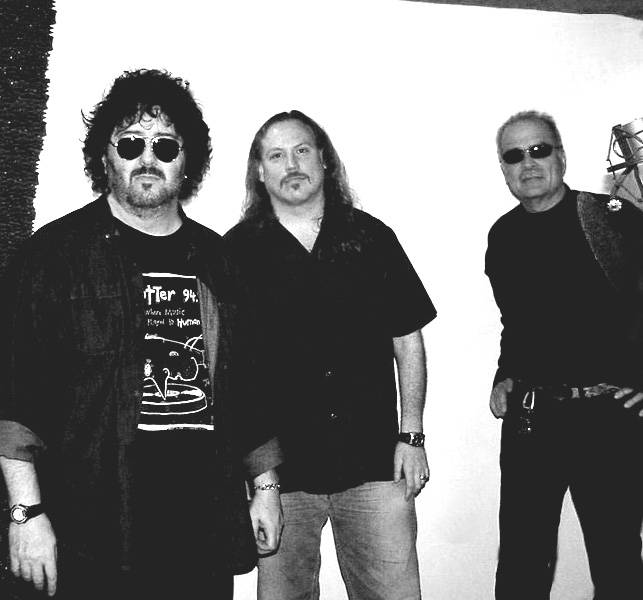
Mike: Actually, I moved to Seattle in 1979 and that was pretty much the end of BEDEMON. †Randy tried recording with a different lineup in ‘86 but that didn’t really pan out and soon after he moved to North Carolina.
Geof: Well again, it wasn’t a band to begin with, so there was no “split up,” and nothing we’d recorded was ever intended for any type of release. The quartet of Randy/Mike/Geof/Bobby recorded a total of fifteen songs throughout the ‘70s, and as Mike mentions, he moved away in 1979. In 1986, Randy and I, along with PENTAGRAM bassist Greg Mayne and future PENTAGRAM guitarist Norman Lawson got together at Greg’s house and recorded a couple of songs with no vocals, and that was pretty much the end of it. Randy moved to North Carolina and in 1988 I moved to California.
– I’d dare say during that period you were ahead of your time. Do you think this is still the same or maybe, as there are more bands playing your style, getting a good acceptance will now be easier?
Mike: When we were recording in Arlington in the 1970’s, doom rock wasn’t really an established genre at the time. There really wasn’t a name for the kind of music we were writing and playing.†Now that the genre is actually established by the copious amounts of bands writing and performing doom as well as the increased fan base, acceptance is easier. In the 70’s, all of my other friends hated and actually mocked BEDEMON’s music.
Geof: Yeah, to be honest, because of Randy’s rather limited abilities on guitar, the over-the-top horror/satanic lyrics and simplicity of the songs, BEDEMON was viewed with a certain degree of amusement by many, including Randy himself. Over the years so many bands have come to love and play this style of music. Randy was, in retrospect, very much ahead of his time and the current release intentionally stays frozen in that era of the 70s.
– Anyway you reformed in 2001. Why did you decide it was the right moment to revive BEDEMON?
Geof: It was back in 2001 that we decided to get together and record a real album. Perry Grayson, a writer for Metal Maniacs magazine among others was doing an article on both PENTAGRAM and BEDEMON. Finding out that PENTAGRAM fans as well as fans of doom metal were trading bootleg copies of the 70s recordings inspired us to write some brand new material and record it. We gathered here in California for six days in April 2002 and recorded the basic backing tracks and most of the guitar solos for the release now finally finished and out a full decade later as Symphony of Shadows.
– Sadly, one year lately, Randy suddenly passes away. How did that affect to BEDEMON?
Geof: We recorded with Randy in April 2002. The tragic auto accident occurred literally three months later and he passed away August 8, 2002. We were understandably in a state of shock, not just from a professional level but because Randy was one of Mike’s and my best friends. But very quickly we knew we would finish the album without him so that people could hear his fantastic songs.
– In fact if I’m not mistaken you started working on your new album before that sad accident happened, moreover you’ve released “Symphony of Shadows” as a tribute to Randy Palmer. After his death, what did give you the strength and idea to move forward with BEDEMON?
Mike: We finished recording the rhythm tracks and guitar solos to all the songs on the album, six of which were written or co-written by Randy before Randy’s tragic death in 2002. †Geof and I saw finishing the album as a labor of love to memorialize Randy’s music forever as something that had to be done. †After many roadblocks along the way (recording the vocals from scratch, Geof’s father’s ill health and eventual death, vocalist Craig Junghandel’s mother passing away as well, paying for studio time,†finding†the right label, etc.) and 10 years we finally finished our first real studio album.
Geof: As stated, there was no question we would complete the album we had begun with our friend Randy. How and when became a project lasting almost ten years, but it did get finished.
– And maybe this is why you’ve decided to leave in the album some of the compositions Randy wrote?
Geof: As explained, BEDEMON was ultimately Randy’s project, and the recordings of mostly his compositions would of course be included.
– You now have two new members; Mike and Craig. What have they brought new to BEDEMON? And how has everything been with them both so far?
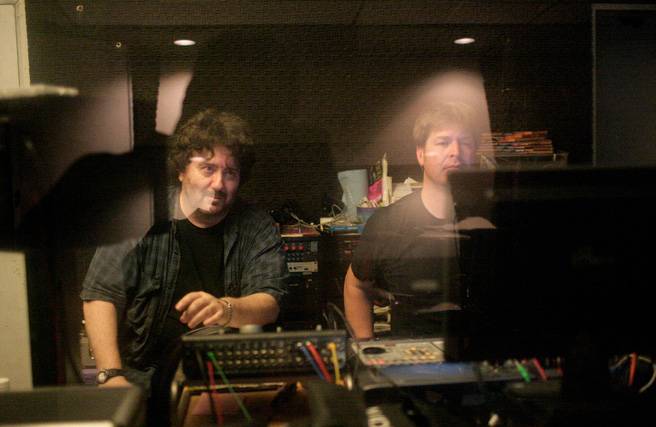
Geof: We actually only have one new member, vocalist Craig Junghandel. Our bass player Mike Matthews has been with the band going back to the 70s. Craig was in a difficult situation for many reasons. He was replacing a “doom legend” in the form of Bobby Liebling. He was singing songs written by a person (Randy) who he tragically never even got to speak to on the phone, much less meet in person. And we had to basically finish writing Randy’s songs, as his guitar-only home demos had no vocals. We had his lyrics and the recorded instrumental backing tracks, but no idea where the vocals would go in each song or what the melodies would be. I essentially finished the songs by writing the melodies and then working in the studio with Craig as to how they would go and then coming up with background vocal arrangements and so on. Many times things didn’t work and we’d try something new. It was both a major challenge but also creatively a lot of fun. I knew Randy’s tastes in music and tried to give the songs the feel and sound I think he’d approve of. I hope I did well.
– Before releasing your first all-new-material album, in 2005 it came out a “bootleg compilation” entitled Child of Darkness: from the Original Master Tapes. How did you come up with the idea of releasing all those songs that were illegally expanded decades ago?
Mike: Two words: †Perry Grayson. †Really the reason we reunited for Symphony of Shadows.
Geof: The reason for releasing Child of Darkness: From the Original Master Tapes was exactly what you refer to: we wanted to put out an official BEDEMON-approved release of all the tracks that had floated around on bad-quality multi-generation cassettes and home-pressed CDs.
– And now, as I said, you have released your actual debut album, Symphony of Shadows so, after so many years and experiences; how are you feeling about it?
Mike: I feel a tremendous sense of accomplishment and quite a bit of sadness because Randy isn’t here to enjoy it but I know he would be very happy. †
Geof: I am blown away by the album after a few years of it being finished and then listening back to it now. Only engineer Shawn Hafley and I know exactly how much painstaking work it took to fix problems in the recordings, work with Craig on the vocals and so on, along with mixing and remixing it until it felt right and done, and while it is a bummer it took this many years to finish it, I feel fans will truly “get” what we were trying to capture and be blown away by how advanced the songs are compared to the simpler 70s material without losing the 70s feel and sound.
– The album title is as beautiful as somber. Could you say it reflects the musical content on it or your very own style? How did you come up with it?
Mike: The album title was Randy’s idea. †Originality†he toyed with Kaleidoscope†of Shadows and changed his mind about fifteen times, as usual.
Geof: Yes, there were a few possible titles. In the CD and album liner notes, it shows the original sketch Randy had done for a possible cover, and the title on his art says, Kaleidoscope†of Shadows. We also briefly considered Cacophony of Silence, which is a lyric in my song “Hopeless,” but Randy started to feel the album title shouldn’t be based on a lyric from one of my songs. He eventually settled on Symphony of Shadows.
– The 70’s vibe remains all over this record, even on the production, showing as well that SABBATH touch. Due to this I would like to know how was the production process like and if you are satisfied with the final outcome, as you’ve got a really natural and organic sound.
Mike: The 2002 instrumental and lead guitar tracks were done in Geof’s garage over a period of about 5 or 6 days. †We would sit in Geof’s living room, learn and rehearse a song and then go down into the garage and record it. I brought in my ADAT and mixing board and microphones and played bass while mixing the other instruments. † After Randy’s death, the tracks were transferred to Citizen†Sound’s†studios in San Luis Obispo and vocals, backing vocals, percussion and other SFX were added. †Geof produced that portion of the process with feedback from me as we progressed. In hindsight I wish we’d had a couple more tracks and mics for the initial sessions, but I think we did really well with what we had and I am very happy with the outcome. †Shawn (Hafley) at Citizen Sound was fantastic.
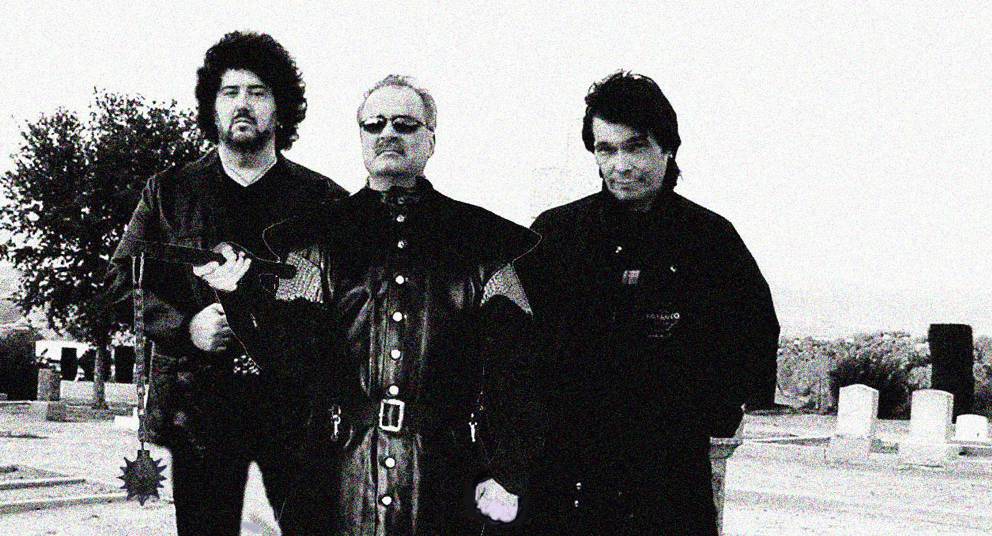
Geof: Yes, I very intentionally produced the album with the thought in mind of a 70s album, so much so that you could put it in your CD player or iPod or whatever along with BLACK SABBATH, URIAH HEEP, DEEP PURPLE etc. and it would sound very much in the style of those bands and others. Shawn is much younger than I am, and so I brought in CDs by THREE MAN ARMY, CAPTAIN BEYOND, STRAY DOG and so on to illustrate to him the “sound of 70s hard rock/heavy metal” that I wanted to production to sound like.
– The cover artwork fits perfectly with your dark sound and atmospheres. What did you want to depict with it?
Mike: When I was back in Arlington soon after Randy’s death, I found a napkin with his stick drawing for the cover. †Eric Rot was the artist who turned it into the perfect cover.
Geof: Mike was visiting Randy’s fiancÈe Taryn Dodd and looking through some of Randy’s possessions and came across a crude, simple drawing of a cover idea, very similar to the experience we had with the Child of Darkness cover, also based on a sketch by Randy. The difference here is that this artwork already existed. Sean “Pellet” Pelletier saw a My Space page for this artist Eric “Rot” Engelmann and among samples of his work was this image of a partially-visible face peering out of the darkness with one hand on a tree. Randy’s sketch shows a partially-visible face peering out from an open door with one hand on the door. They were amazingly similar! We knew we had found our cover.
– It also looks like it has certain link to your lyrics that, by the way, they seem to be really well-cared, and they have a strong personality as well. What do they deal with and what does inspire you to write them?
Geof: Randy wrote about subjects he both loved and that were a part of his life, even in the darkest of ways. Many of his lyrics were influenced by the horror films he was a fan of, the unknown facing of one’s death and also by the drug use he struggled with for much of his life. It’s not difficult to hear a lyric as in the song “D.E.D. (Dying Every Day” — “when the needle slides in, the pain slides out” — and not know what he is referring to.
– As mentioned earlier, your atmospheres have a really mysterious and eerie feeling to them. Where do you draw inspiration from to create such haunting passages? An example of this could perfectly be “Saviour”, with its amazing choruses.
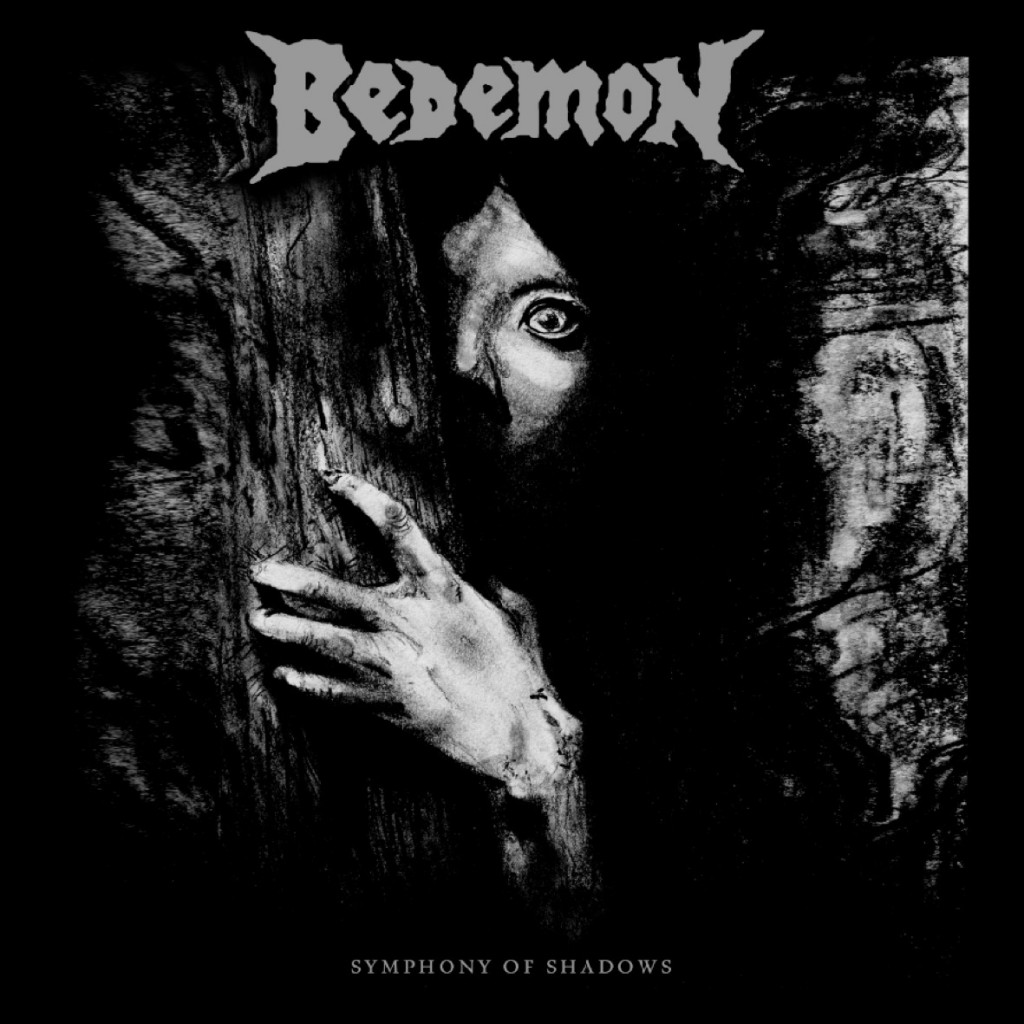
Geof: “Saviour” is a very disturbing song in lyric and theme, and I wanted the music to convey that as well. The chorus of the background vocals singing the same notes as the guitar was sung with the idea of “zombie monks,” really creepy but strangely catchy and memorable. This was one of the reasons Randy thought “Saviour” should be the album opener. It was not an easy feat to combine those elements.
Mike: For “The Plague,” I was thinking what if PINK FLOYD met BLACK SABBATH during the Apocalypse.
– Also the vocal diversity of Craig fits quite well with your music and overall feeling. Was it easy to find a suitable vocalist for BEDEMON?
Mike: As soon as we heard Craig we knew he was the one. Luckily Randy heard him as well and wanted him, so though they never met, Randy actually picked Craig as the lead singer for BEDEMON.
Geof: Randy agonized over whether to use PENTAGRAM vocalist and good friend Bobby Liebling on these recordings. Ultimately, he decided there were reasons he didn’t want to work with Bobby that are described in the CD/LP liner notes and I won’t repeat all that here. Engineer Shawn Hafley and I had both been DJs in the 90s at a local station and he was at the time working in a local record shop. He knew we were looking for a singer and recommended checking out Craig, who was manager of the store’s other location. I met him, heard tapes of his singing with various bands and then passed them along to Randy and Mike. We knew we had found our singer, and will always be indebted to Shawn for that connection.
– On the other hand, the whole album is really guitar-oriented, as we can easily notice with songs as “Son of Darkness”. How do you approach the guitar work and the overall songwriting process?
Mike: I always start by searching for a nice doomy riff and let it go from there.
Geof: Yeah, it starts with a cool riff. Either while just playing for fun, or driving down the road, whatever. In this case, we know what the fans would want, and that’s heavy, scary, disturbing SABBATH-like chord changes, sinister vocals and dark lyrics. The guitar solos, most done by myself and few by Mike, were largely spontaneous. Randy didn’t tell us in advance where the solos would go or even who would play them. We would record the backing track, and then he’d go, “Okay, the solo starts here, and goes for eight lines. Geof, why don’t you play this one?”. They would go upstairs while I worked on it, and I’d then play it back for them. That was it. No prep, no advance working it out. On my own tracks “Saviour” and “Hopeless” I did spend a lot of time years later adding in and refining the solos, but the other solos on the album were all done at the time of the original recordings by myself and Mike back in April 2002.
– Being brief, I consider this “Symphony of Shadows” a true masterpiece but, what does this album mean to you? As I guess beside the musical side it may also have a quite strong emotional meaning for you.
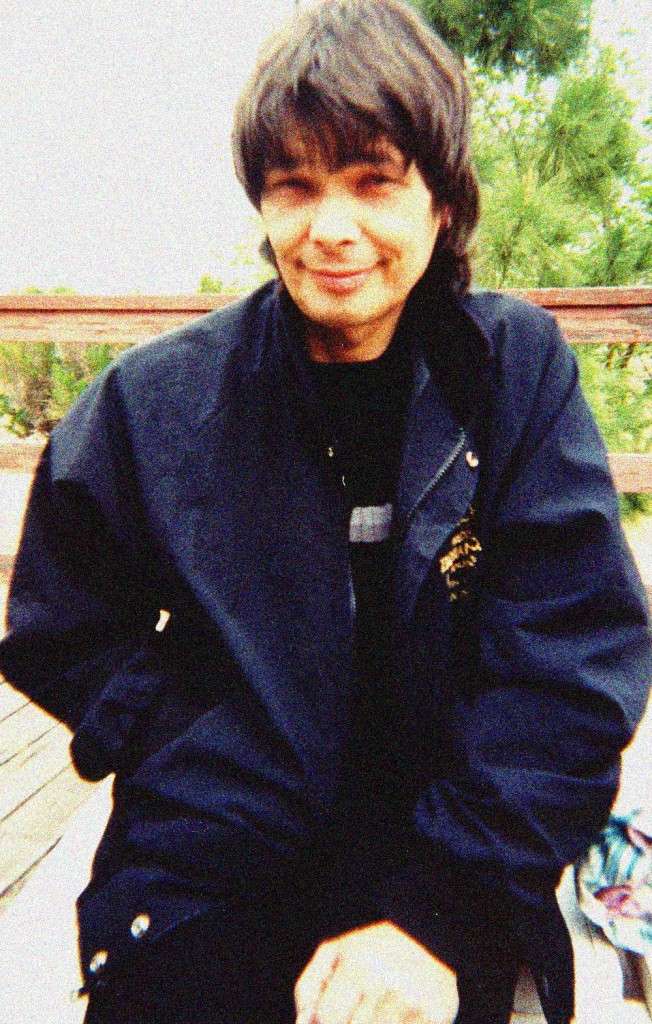
Mike: Thank you very much. †This album was our best chance to get the songwriting genius of my very close friend Randy†Palmer†out to the world. †This album is very personally emotional to me.
Geof: There were many times I lost it in the studio when listening to a playback of a song during the mixing process. As I’ve said, I tried to finish this album in a way that Randy would approve of and be proud of, and that would best spotlight his incredible songs. Remember that for more than ten years, Randy didn’t even own a guitar. When we made the decision to record this album in 2001, he had to go out and buy one along with an amp just to begin playing and writing again.
– And all this about it being said; how could you describe “Symphony of Shadows” in just 3 words?
Mike: Horror film soundtrack
Geof: Classic 70s album.
– It seems like you’ve picked up where you left off in the 70’s/80’s. Was this what you were looking for?
Mike: 1970’s BEDEMON sound†
Geof: yes, to me it sounds like BEDEMON, but with the songwriter way more advanced. Longer tracks, more complex arrangements and so on, but still with that creepy, heavy doominess to it.
– On the other hand, has this been something easy to do and achieve?
Mike: It†definitely†was not easy, but some of my favorite all time music is from the 70’s; that†helps.†
Geof: It was technically difficult because of the recording challenges we had to overcome, along with the song arrangement issues after Randy died and we had to essentially guess what he wanted in each song. Stylistically, it was fairly easy for me because I’m firmly stuck in the 70s, my favourite decade. I know the music and the sound and knew that’s what I wanted to capture here.
– I ask so because time changes and so does music. How do you think has Doom Metal evolved since you started?
Geof: I think a lot of doom metal has the sound . . . but not the songs. Case in point is that we don’t tune the guitars down to an E-flat or D to make the songs sound “heavy” as nearly all bands do in the doom world. We record in normal tuning. We make the songs heavy by writing heavy riffs and chord changes, not using low tuning to “mechanically” give them a heavy sound. I don’t hear a lot of doom bands that can write a memorable song like “Sweet Leaf” or “Iron Man” or URIAH HEEP’s “Gypsy.” I also have to have a decent, if not outstanding, singer. Ian Gillan. Dio. Ozzy. I cannot STAND the growling “cookie monster” vocals that so many doom and modern metal bands have. That’s why Craig blew us away: he can SING!!!
– And what has changed in you? Both on a musical and personal level.
Mike: I am a much better player than I was in the 70’s and I have way more to draw on from my life for emotional†composition†ideas.
Geof: I have a greater knowledge of what goes into a song to make it sound good. The task of salvaging this recording from the bare-bones instrumental backing tracks of 2002 to the finished product of 2012 was a major learning experience. Personally I have grown, physically I have shrunk, having lost 100 lbs. over the past four years. The past decade has been rough emotionally, losing Randy in 2002, my father in 2004 and then PENTAGRAM guitarist Vincent McAllister in 2006. Musically, I look forward to working on a number of other projects in the works…
– That has been everything from my side, thanks once more for taking your time. If you now want to add some final words; feel free to do it.
Geof: I appreciate your interest in the music of BEDEMON and am very grateful to you for your fantastic review. As mentioned, it was the very first review we saw, and after all the time and work put into it, it meant a lot that you enjoyed what you heard. I’m sure Randy would love to thank you as well, and am sorry you can’t interview him, but on behalf of Mike, Craig and myself — and Randy — thank-you Tania.

